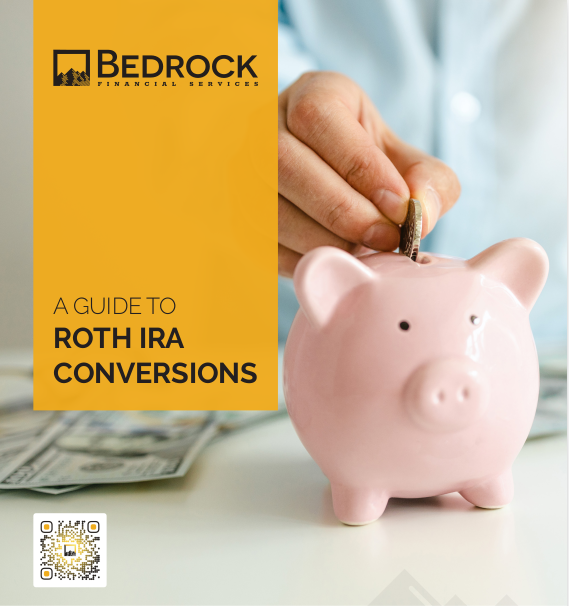Key Takeaways
-
Seasonal marketing campaigns are among the most efficient and low-effort ways to engage new prospects and re-activate past clients.
-
With strategic timing and automation, these campaigns can consistently drive results throughout the year without overwhelming your schedule.
The Hidden Power of Seasonality in Financial Services
Financial professionals tend to overcomplicate lead generation. You may spend countless hours trying to create the perfect pitch or develop an intricate marketing funnel—yet miss the simple power of seasonality. The truth is, your calendar is already full of built-in touchpoints that you can convert into automated campaigns.
Seasonal marketing isn’t a gimmick. It’s a proven rhythm that aligns with how clients think and act throughout the year. When you plug into that rhythm, you don’t need to fight for attention—it’s already there.
Why Timing Creates Leverage
Seasonal patterns influence more than just shopping habits—they shape financial behaviors. Think tax deadlines, open enrollment windows, and end-of-year planning crunches. These are moments of heightened urgency. When you align your message with these windows, people are far more likely to take action.
Timing doesn’t just matter. It multiplies your message.
For example:
-
January: Clients are setting financial resolutions.
-
April: Tax prep triggers conversations about deductions and retirement contributions.
-
September: Parents are thinking about college savings.
-
November-December: Year-end deadlines create urgency for RMDs, charitable giving, and portfolio reviews.
Your job is to be present in these moments—not reactive, but ready.
Campaigns That Practically Run Themselves
What makes seasonal campaigns so attractive is their repeatable nature. Once you build them, they’re easy to deploy each year with minimal updates. Here are five campaign types you can automate now:
1. New Year Financial Reset
Timeline: January 1–31
Clients are in goal-setting mode. Tap into their motivation by offering:
-
A downloadable goal-setting worksheet
-
Automated emails with “New Year, New Financial Plan” themes
-
Calendar booking links for annual reviews
This campaign sets the tone for your year and encourages early engagement.
2. Tax Season Readiness
Timeline: February 15–April 15
This is the most finance-driven season of the year. Create a simple email sequence that:
-
Reminds clients about tax-saving strategies (HSA, IRA contributions)
-
Offers a free checklist download
-
Suggests a quick consult before filing
This campaign naturally attracts both clients and referrals.
3. Mid-Year Money Checkup
Timeline: June 1–30
This is an overlooked but powerful window. Half the year is gone, and clients often wonder if they’re still on track. Offer:
-
A brief video update on market trends
-
A personal note offering a mid-year review
-
An easy way to reschedule missed meetings from Q1/Q2
This campaign shows leadership when most advisors go quiet.
4. Back-to-School Planning
Timeline: August 15–September 15
This isn’t just for parents. It’s a trigger moment for education funding, household budgeting, and life insurance check-ins. Share:
-
Tips on 529 plans and education savings
-
Budgeting worksheets for families
-
Brief guides on life insurance basics
Use this campaign to position yourself as a resource across generations.
5. Year-End Financial Countdown
Timeline: November 1–December 31
The final weeks of the year are filled with deadlines and planning decisions. This is your highest-leverage moment. Your campaign should:
-
Offer a year-end checklist
-
Highlight key deadlines (e.g., RMDs, gifting)
-
Encourage last-minute strategy sessions
Don’t underestimate how much action is taken in this period—especially when prompted.
Tools to Make It Automatic
You don’t need a full-time marketing team to pull this off. What you need is a clear system. Each campaign should include:
-
Email templates (3–5 per campaign)
-
Landing pages or downloadable resources
-
Calendar booking integration
-
Follow-up automation for those who click but don’t act
Once built, these assets can be reused every year with only minor edits to dates or updates to laws. You can schedule them well in advance and let them run with just occasional check-ins.
Stop Thinking of Marketing as a Chore
The reason most financial professionals ignore seasonal campaigns is not because they don’t work—it’s because they assume it’s going to be time-consuming. But the right approach flips that script.
These are low-lift, high-impact efforts:
-
No need for creative reinvention every time
-
Clients are already primed for the topic
-
Lead gen and relationship nurturing happen in tandem
And when you embrace automation, you stay top-of-mind without becoming a full-time marketer.
How to Plan the Next 12 Months Today
If you’re sold on the idea, here’s how you can structure your year now:
Step 1: Plot the Campaigns
Use the five campaigns mentioned earlier and mark their launch windows on your calendar. Use your CRM or scheduling software to set reminders.
Step 2: Create Core Assets
Each campaign should include:
-
3–5 pre-written emails
-
A lead magnet or resource
-
A call-to-action (booking link or webinar invite)
Build one campaign per month for the next five months. By November, you’ll be ready to run them all in sequence next year.
Step 3: Automate
Use email automation tools to schedule and drip your content. Many CRMs allow you to tag contacts and move them through flows based on engagement.
Step 4: Review and Refine
After each campaign ends, look at your open rates, clicks, and meetings booked. Make small adjustments, save the assets, and get ready to reuse them.
What Happens When You Stay Consistent
When you execute seasonal campaigns well, you begin to:
-
Build stronger engagement with both active and dormant clients
-
Attract more referrals by being present during decision moments
-
Reduce your reliance on random prospecting or cold outreach
-
Shift from chasing clients to attracting them year-round
The key is not perfection. It’s consistency.
You’re not just showing up. You’re showing up at the right time with the right message.
Your Calendar Is Already a Campaign Engine
Every month has built-in momentum—you just need to tap into it. The beauty of seasonal marketing is that it doesn’t require you to constantly invent new hooks. Instead, it asks you to anticipate what your clients are already thinking about and show up with solutions before they ask.
By planning ahead, automating wisely, and delivering timely content, you create a marketing machine that works even when you’re focused on client meetings.
If you’re ready to simplify and scale, seasonal campaigns may be the smartest strategy you’re not using yet.
Let’s Help You Build Campaigns That Actually Work
At Bedrock Financial Services, we understand how easy it is to get buried in client service and let marketing slip. That’s why we’ve built tools and support systems to help professionals like you run fully automated seasonal campaigns without burning out. Whether you need templates, automation tools, or just strategy sessions—we’re here to support your growth.
Sign up with Bedrock Financial Services today and take back control of your calendar—without sacrificing results.







